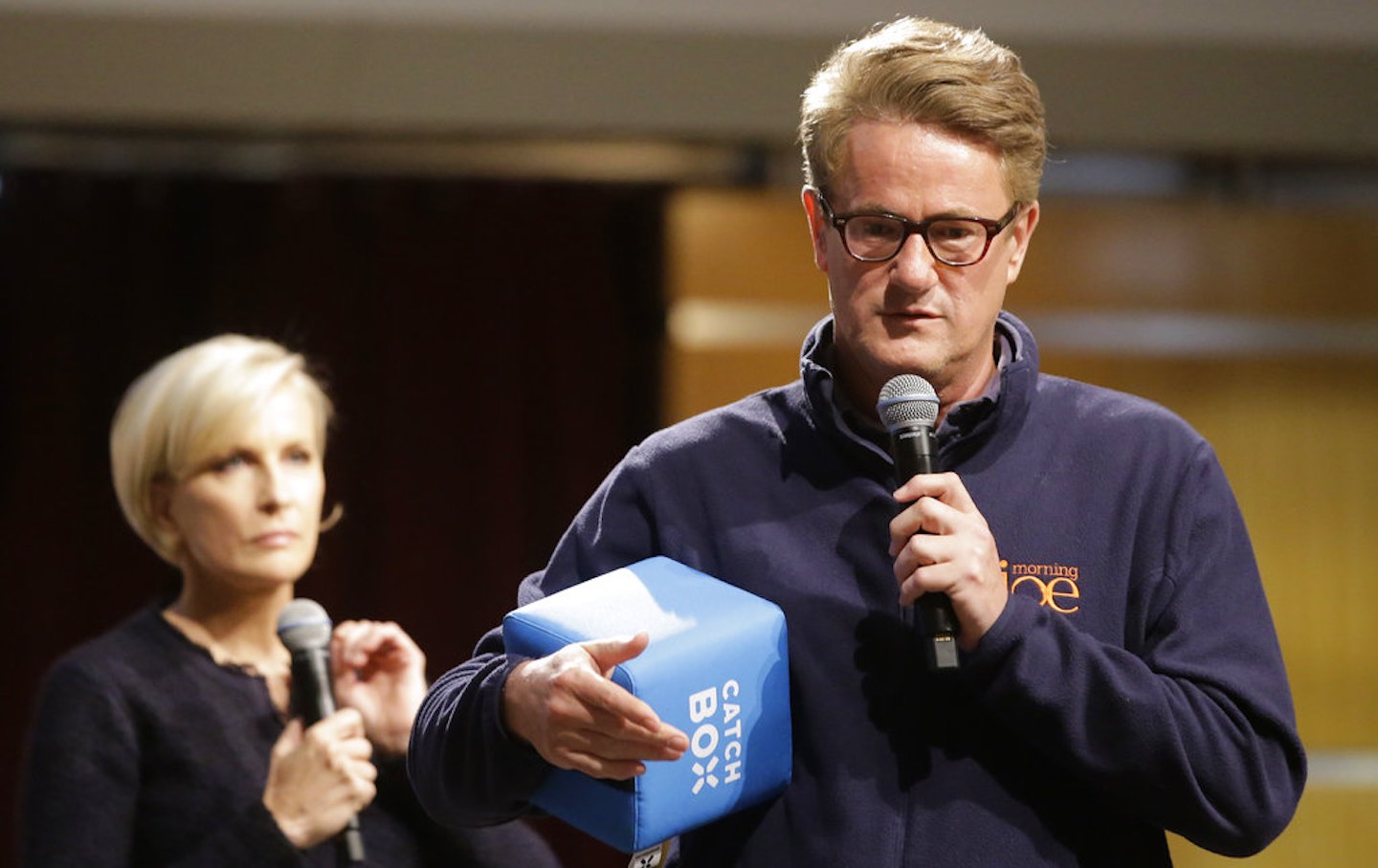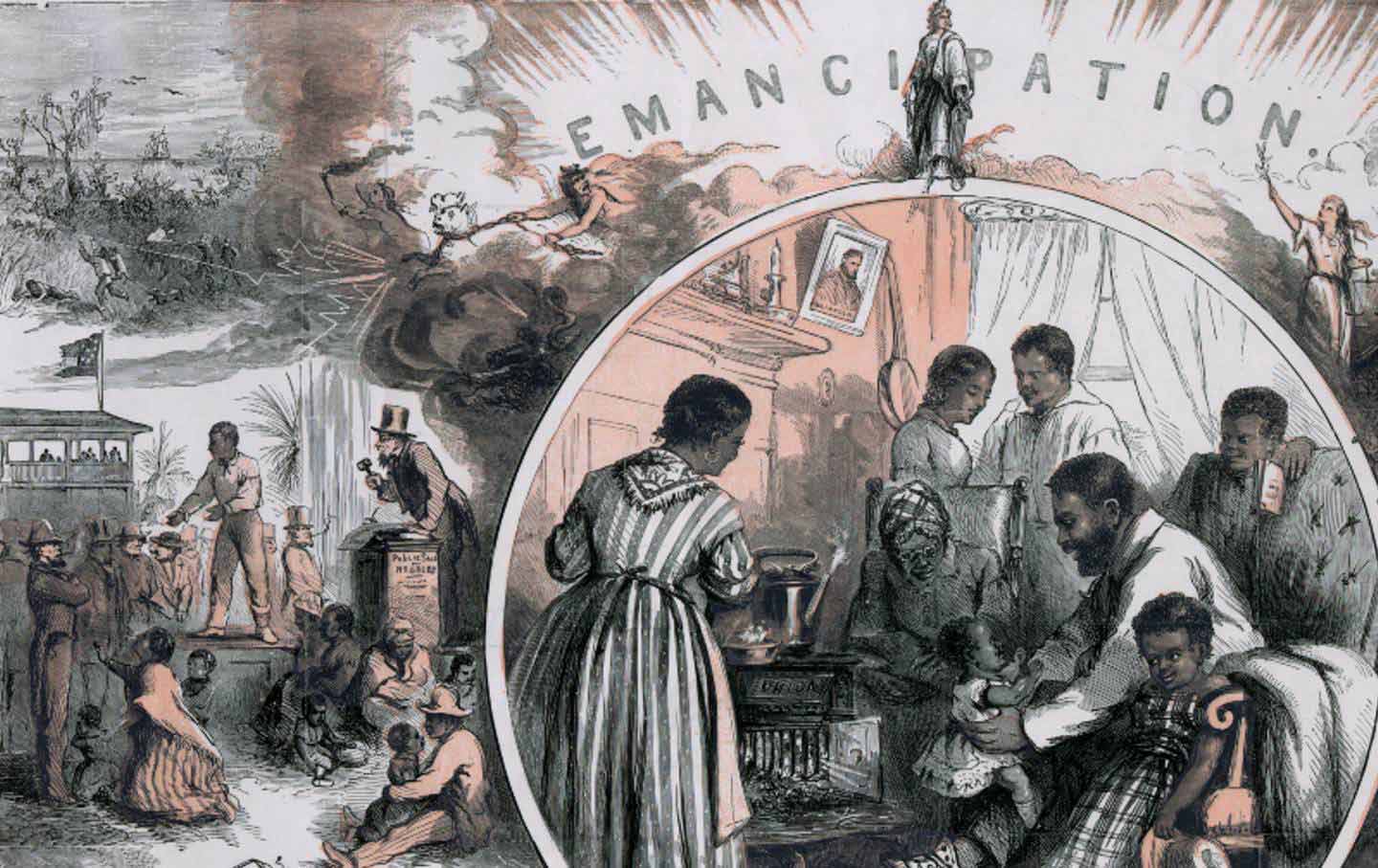The Workers Behind Bozeman’s Boom
One of the fastest-growing small cities in America relies on undocumented labor to fuel its economic explosion.
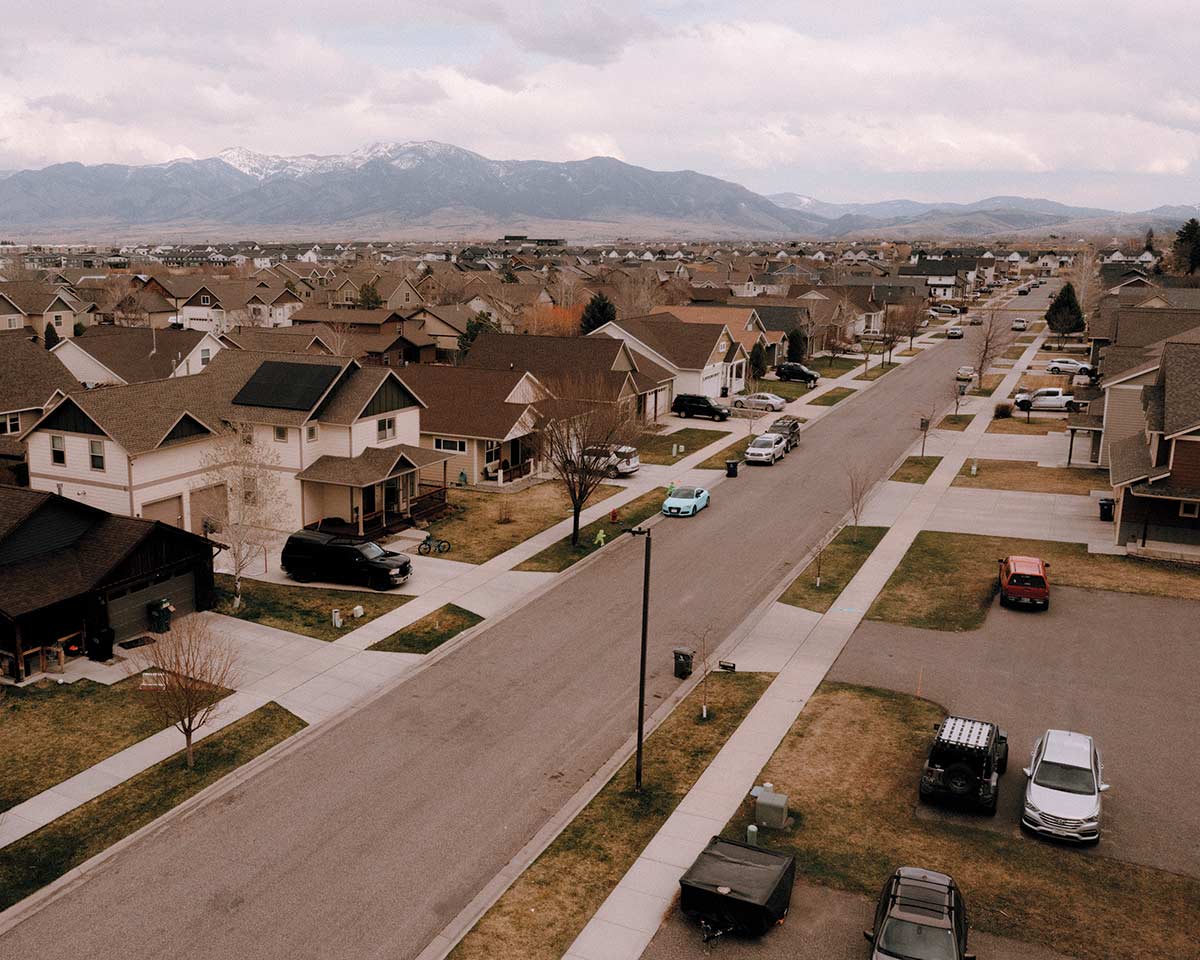
The first time Rosa saw snowflakes falling, she thought they were pieces of cotton. “I thought I was going to choke,” she told me.
Rosa, who is from Honduras, had never seen snow before, but it’s become a familiar sight now that she’s living in Bozeman, Montana. The city, population about 56,000, is ringed by four mountain ranges in the Northern Rockies. It took her a while, but Rosa has learned to deal with the weather. “Now I think it’s very pretty,” she said in Spanish. “Our kids love to play in the snow.”
Rosa, who has a round, serious face and long black hair, is one of the hundreds of thousands of Hondurans who have been displaced in recent years by political corruption, gang violence, economic stagnation, and environmental catastrophe. In 2020, when gang members threatened to kill her, she abruptly fled the country with her youngest daughter.
Rosa’s husband, Luis, had already gone to the United States with their elder daughter and found his way to Bozeman, drawn by the promise of available jobs. “I had a friend here, and he told me that this place was good for finding work,” Luis said. (Rosa and Luis, who are both undocumented, requested that their names be withheld for their safety. The names of all the immigrants quoted in this story have been changed.)
Twenty, even 10 years ago, Bozeman—far from the southern US border and overwhelmingly white—would not have been an obvious destination for workers from Latin America. One Mexican construction worker who moved here from Colorado in the mid-2000s told me that he used to walk the aisles of the local Walmart and hear only English. That is no longer the case, he said.
Southwestern Montana is in the midst of a multiyear economic explosion, propelled by a surge of wealthy new residents, a multibillion-dollar tech industry, and, especially, a luxury real-estate market. In February, the median price for a house in Bozeman surpassed $1 million. The resulting demand for construction workers has attracted people like Luis to the city. Luis, a poker-faced man with a small patch of beard, has as much work as he can handle these days: framing houses, putting up siding, and roofing—the most dangerous job, and his least favorite.
Tina Visscher, a longtime Bozeman resident, became aware of the city’s growing immigrant population at a Quaker meeting in 2019. Someone mentioned that the Bozeman public schools were seeing an increasing number of Spanish-speaking students. Visscher decided to get involved. “The first thing we did was buy a bunch of coats and boots, because they were all freezing,” she said.
Help of many kinds was needed, and Visscher, a retired psychotherapist, soon found herself serving as the director of a small but rapidly growing nonprofit. Today, Bienvenidos is Bozeman’s largest and most prominent immigrant-aid group, helping new arrivals with housing, transportation, legal services, and more.
“They’re coming here because there’s work building the houses for the millionaires,” Visscher said.
Most cities change slowly, their evolution almost imperceptible. Bozeman’s remaking has been sudden and striking. Its population has increased by more than 50 percent since 2010, and it’s been one of the fastest-growing small cities in the country for the past few years. As a college town near the mountains, Bozeman has long been an attractive destination, with all the attendant affordability concerns. But it still had reasonably priced working-class neighborhoods, as well as cheap rentals for seasonal US Forest Service employees and ski-hill workers, who commuted to the nearby resorts.
Today, Bozeman has been transformed. Sleek modern developments with glassed-in sitting rooms rise on a lot occupied less than a year ago by a rusting warehouse. On the city’s outskirts, cramped subdivisions line both sides of a highway on what until recently was open farmland. Dozens of tech and biotech companies have headquarters here. Well-to-do people, many of them remote workers, have poured into Bozeman and Gallatin County, often drawn by what real-estate ads call the “lifestyle” attractions of southwestern Montana: accessible public lands, mountain vistas, Yellowstone National Park, and fly fishing. About an hour’s drive from Bozeman on the way to Yellowstone is Big Sky, a picturesque mountain town, home to great skiing and the Yellowstone Club, whose members include some of the world’s richest people, including Bill Gates, Mark Zuckerberg, and Eric Schmidt. Bozeman’s identity as the Mountain West’s hot new destination has been written up in The Wall Street Journal, The New York Times, and Time magazine.
But this view of Bozeman ignores the hidden impacts of the city’s newfound economic might. The well-off people who move to Bozeman from California, Texas, and the East Coast want the amenities they had in the zip codes they left: upscale dining, house cleaners, landscaped lawns, and executive-style homes. These new demands have made Bozeman less affordable, created a homelessness crisis, and overburdened public services. At the same time, they have created a nearly insatiable need for the workers who build those homes and do the other jobs that the US economy so often assigns to noncitizens. This has made Bozeman an endpoint on a now-common journey for many undocumented people, one that begins in countries like Honduras, with their violence and economic misery, crosses the increasingly militarized US border, and concludes in cities in the Rockies like Denver and Salt Lake City. But while recreation- and amenity-dependent towns in the region have long drawn immigrants seeking work, Bozeman’s appeal has sprouted seemingly overnight.
It’s almost impossible to measure the growth of Bozeman’s Spanish-speaking population accurately, as nearly all the new arrivals are undocumented. In Gallatin County, the Latino population jumped from 2.8 percent to 5 percent between 2010 and 2020, according to US census data. Experts say those numbers are conservative, and they don’t include the years since 2021, the period of Bozeman’s most explosive housing-market growth.
Signs of these changes are everywhere: in the Mexican grocery that opened in 2018; the line of taco trucks along Seventh Street; the youth soccer club that, in partnership with Bienvenidos, waived registration fees for immigrant kids. The public-school system, meanwhile, is scrambling to support the influx of multilingual children. The number of students who receive additional English-language instruction in Bozeman’s public schools has doubled in just a few years to around 350, and there are at least as many recently arrived Latino students who are not enrolled in those programs. These immigration trends have been good for Bozeman: A study by the South North Nexus, a nonprofit that offers immigration legal aid in Montana, estimated that Hispanic immigrants contributed more than $300 million in economic benefits to the Bozeman-area economy in 2022.
The city’s newly arrived immigrants come from countries like Guatemala, Peru, and Venezuela as well as Honduras. Some crossed the border without documentation and try to remain undetected. Immigrants seeking asylum—including many Hondurans—declare themselves at the border and submit a petition arguing their case. But they cannot apply for a work permit until their asylum petition has gone unresolved for 150 days. By September 2024, there will be a record 8 million pending cases in US immigration courts, and according to US Citizenship and Immigration Services, work-permit applications by asylum seekers are taking a year to process.
These people came to the United States to work, yet the law bars them from doing so. Asylum seekers in Bozeman can expect to wait well over a year before being legally allowed to work. It’s not surprising, then, that many immigrants have sidestepped the system, taking jobs that pay cash and living in fear of encounters with law enforcement. This is the other side of one of the nation’s most explosive—and expensive—housing markets.
According to Buzz Tarlow, this is an old story in Montana, where prosperous industries have long attracted immigrants who have helped shape the character of the state. Tarlow spent decades as a construction lawyer in Bozeman and Big Sky, and he knows the industry intimately. “Montana is historically a state with immigrants from all over the world,” he said. At the turn of the 20th century, Butte, a city 85 miles west of Bozeman, was a major copper boomtown. It was the headquarters of Anaconda Copper, one of the largest mining companies in the world, whose mines attracted immigrants from Ireland, Germany, Eastern Europe, and China. They helped create Montana’s first industrial hub—and set off a wave of labor organizing that transformed the state’s politics. Tarlow sees this pattern playing out now in Bozeman, bringing with it many of the same tensions and contradictions.
“What we’re experiencing with a construction boom in southwestern Montana is no different than the Butte mines,” he said. “Hopefully, the working conditions are a little better, but it’s hard. The weather’s nasty. And there’s a language barrier.”
Spanish-speaking immigrants face difficulties at work and in the form of a menacing legal system. Luis was pulled over by the police after driving the speed limit and making a right turn at a green light. A Bozeman immigration advocate who helped him in court said that the citation did not state a reason for stopping him. She suspected racial profiling. Luis agreed. “In court, they told me it was because of the license, but the question is: Why did she stop me?” he said.
Luis received a relatively light fine—$300 for driving without a license—but now he travels to and from work worried about another police encounter.
“I’m afraid to drive now, because they could detain me,” he said.
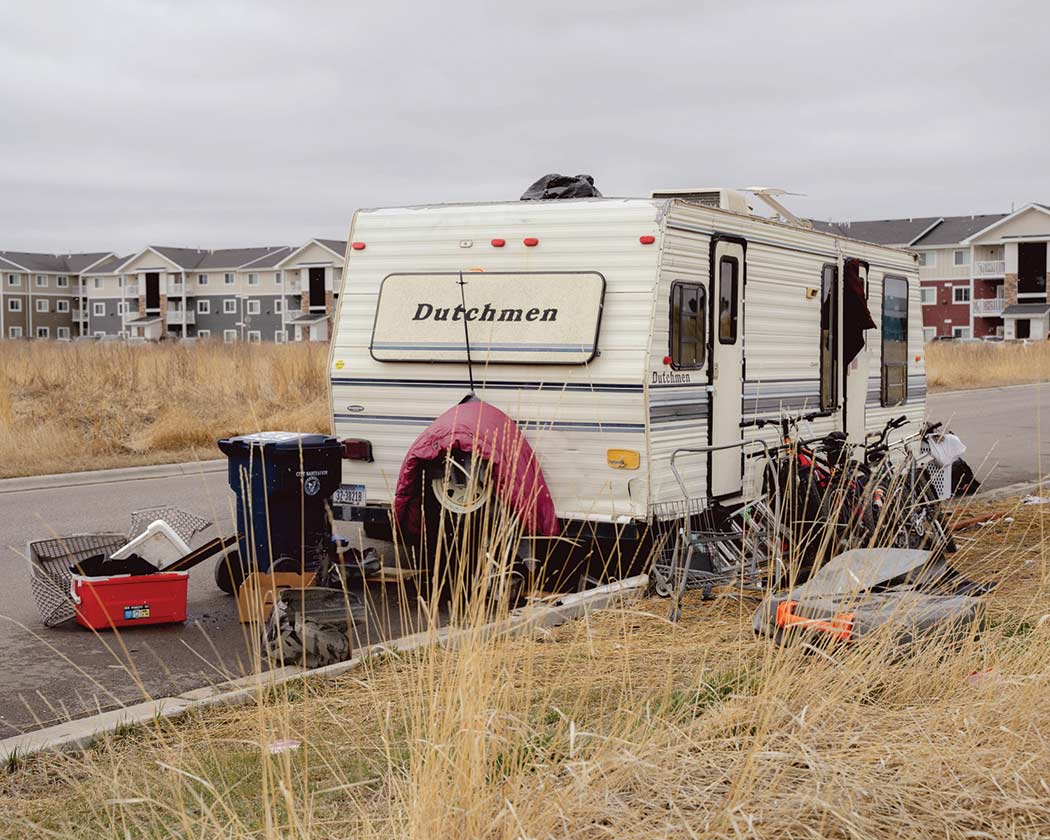
Evidence of a shortage of workers in construction and service jobs is plentiful in Bozeman—from the skeletons of half-built houses to the signs outside a Wendy’s advertising starting rates of $22 an hour. But the robust housing market that draws these immigrants to Bozeman cannot provide them with reliable shelter, especially if they lack government-issued IDs, a credit history, or a Social Security number. In any case, the rental market is extremely tight.
Bozeman’s rental vacancy rate hovered around 2 percent for years before rising slightly in 2023. Immigrants are forced to accept run-down, overcrowded housing: trailer parks, highway motels, rentals owned by their bosses. Or they join the thousands of people who sleep on the streets every night. In 2023, Montana had the nation’s largest increase in chronic homelessness, and urban camping is omnipresent. During a cold snap in early 2024, Bozeman’s sole year-round emergency warming center was at 98 percent capacity, according to Brian Guyer, the housing director of the nonprofit Human Resource Development Council, which operates the shelter. Since 2020, the HRDC has seen the number of Hispanic residents it serves rise from 5 percent to 16 percent of the total. Use of the emergency warming shelter by Latino individuals “has gone up significantly since the pandemic,” Guyer noted, though they remain “a small percentage of the overall guests.”
Popular
“swipe left below to view more authors”Swipe →Marco and Carmen, who came to the US with their children in 2019, have been luckier than many others. They already had relatives in Montana, who helped them stay off the streets. Ever since they left La Ceiba, a port city on the Caribbean coast of Honduras, the family has moved repeatedly, each new rental acquired under the name of a relative who married a US citizen. Last May, the couple sat on a park bench outside a church, cottonwood fluff making drifts at their feet. A few trailer parks in Bozeman and some others in outlying towns like Belgrade are known to look the other way when renters lack documents, a situation that often leads to overcrowding. Some immigrants find rentals through brokers who overlook the lack of identification in return for extortionary fees. (Luis paid an extra $2,000 to secure his family’s current rental.)
Despite the instability, Marco described his family’s home life as a respite—albeit an isolated one. Marco is a friendly, middle-aged man with a sun-creased face and the thick hands and forearms of a laborer. Making friends is more difficult in America than it was back home, he said. He joked that he knows his neighbors’ dog better than he knows the neighbors.
“I play chess with my son. Sometimes we go to the movies,” he said. “Sometimes the whole family goes out to eat. We have little time to hang out because of work.”
After arriving in Montana, Marco spent about nine months framing houses and then a similar amount of time working as a stonemason. Much of the work was in Big Sky, the nearby ski town. The latter gig ended, he said, after immigration authorities told his bosses to get rid of their undocumented employees. These days, he works in a restaurant kitchen, and Carmen works at a fast-food joint. They had to buy fake Social Security numbers on the black market for about $150 each. “You know how it is,” Marco said. “Everything is an application: They ask for ID, they ask for Social Security, all those things.”
Immigrants who work illegally have little recourse when they’re mistreated by their managers. Wage theft is common, according to multiple undocumented workers I spoke with in Bozeman. Ana, for example, got a job almost immediately with a house-cleaning company. But after a few weeks, she said, her boss abruptly left town without paying her or the other cleaners. Eventually, she found her current job framing houses in Big Sky. Luis told me that many of his employers owe him money; one boss owes him $20,000 in unpaid work hours. “There has been a lot of this,” he said with a shrug.
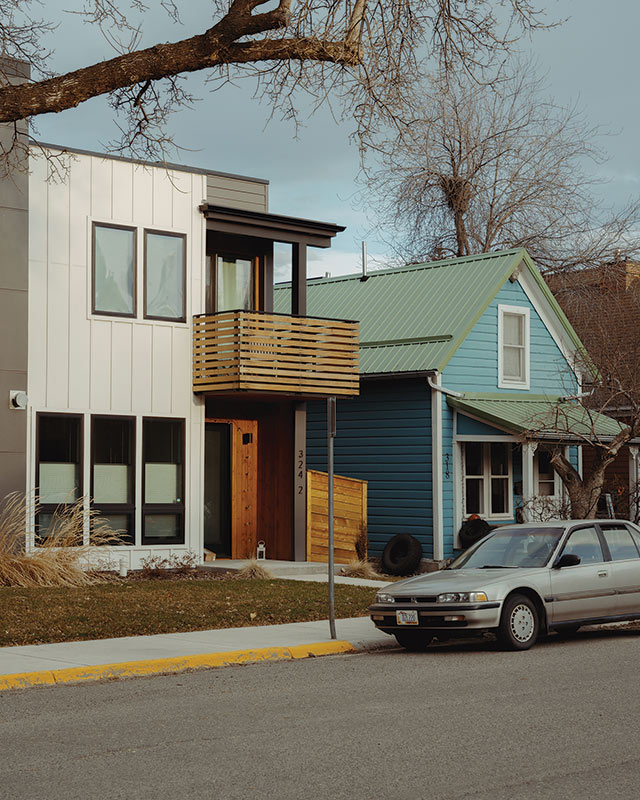
The Bozeman construction sector is dominated by just a few Montana companies, which are then supported by layers of contractors and subcontractors who employ undocumented workers. Most pay in cash, and some provide housing. Subcontractors are exempt from certain labor rules, a situation that encourages substandard safety conditions on the job site while giving the larger firms deniability for employing noncitizens. Construction is dangerous work, one of the deadliest jobs in the US, according to data from the Bureau of Labor Statistics.
Soon after he came to Bozeman, a Honduran construction worker named Manuel took a bad step on a ladder on the second story of an unfinished house and fell, hitting the concrete floor with both feet. Nothing was fractured, but his thigh ballooned; recalling the injury, Manuel held his hand a few inches away from his thigh to show the size of the swelling. Doctors told him that the impact had compressed the nerves in his leg. “It was almost like that leg was pushed further in,” he said.
Later, Manuel learned that someone had paid his hospital bill, a kindness that not all laborers can count on. During his stint as a stonemason, Marco developed a hernia from lifting the heavy materials. But the cost—and the fear of being exposed for working illegally—prevented him from seeking medical treatment. This is a frequently heard story: In a study of Bozeman’s Hispanic community by Montana State University’s nursing department, 81 percent of respondents lacked a reliable source of medical care.
Last November, after months of effort, Marco and his family found a new place to rent with a large yard on the outskirts of Bozeman, near the airport. I met Marco in a coffee shop in town. He wore a denim jacket and camouflage ball cap and seemed tired but relieved at the housing breakthrough. His heart condition was getting worse, though, and he put much of the blame on the family’s housing troubles. “My stress has grown,” he said. Sometimes he had palpitations. At other moments, he felt compression on his heart. “I didn’t have any [heart problems] before coming here,” he said.
Marco’s situation reveals the paradox facing many of Bozeman’s Latino immigrants. His heart condition is exacerbated by his lack of legal status, but without legal status, he cannot address his heart condition. At one point, Marco was buying heart medication at a discount from a local clinic. Eventually, however, the clinic told him he would have to pay full price, but without insurance, he couldn’t afford it. He said that he doesn’t seek medical care because of the expense. He needs the money to help his son, his son’s girlfriend, and their new baby—whom Marco has never met—make the trip to Montana. Carmen was also receiving medication from the clinic, he said, “but now she can’t pay.”
Marco told me that he and Carmen come from a culture that trusts in God, and they believe that God will take care of their health. But, he added, “if there were a way we could get or find what we need, medicines and everything—if there were a way to do it without so much difficulty—we would do it.”
Conditions this stressful are bound to result in widespread depression and substance abuse. This worries Susie Rodriguez, the executive director of the Montana Immigrant Justice Alliance, an immigrant-aid nonprofit (its acronym, MIJA, is the Spanish word for “daughter”). Rodriguez runs MIJA in what little free time she has. She has seven kids, and, in addition to her day job at a local emergency room, she’s taking classes to get her nursing certificate. In her work at the hospital, she said that she has seen a spike in fentanyl overdoses. Montana’s attorney general recently announced a 20,000 percent increase in seizures of the drug by law enforcement since 2019. Rodriguez fears what fentanyl’s availability means, given the anxiety and isolation that afflict so many new immigrants. She worries particularly about young, unattached men, who have no families and a hemmed-in social life.
“That’s their life,” she said. “You work every day, every day of the week. Sometimes they’re working Saturdays. So you only have that one day, Sunday, to do your laundry, to catch up and drink, back to bed, and wake up early again.”
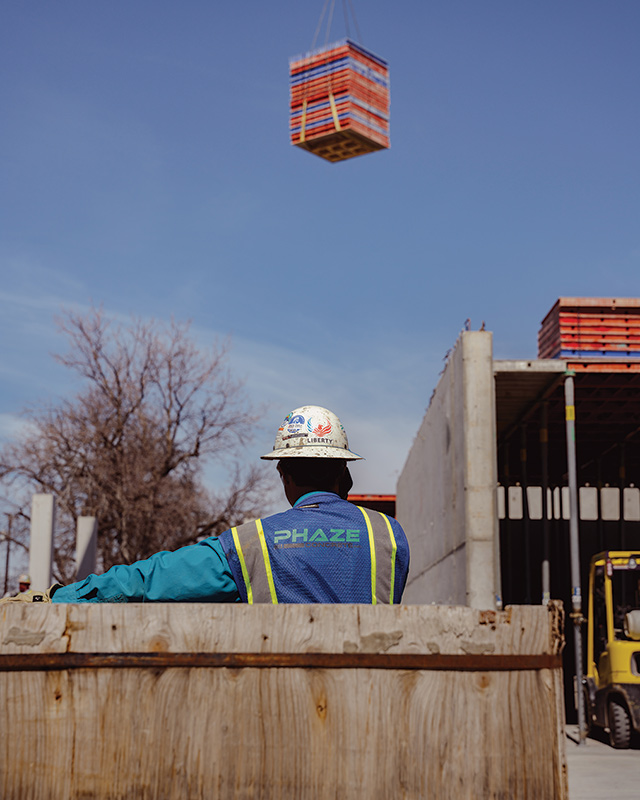
Bozeman-area immigration advocates have built a robust network of local aid groups. Every month, Bienvenidos holds a coordination meeting over Zoom, attended by representatives from the food bank and emergency-housing groups and, at times, by city officials.
These meetings reflect the rapid growth of Bozeman’s immigrant population, but they also show that the city is getting little help from the state. Montana’s political makeup has changed dramatically in recent years. Senator Jon Tester, who faces an election this year, is the last remaining Democrat holding statewide office, and Republicans have supermajorities in both houses of the state Legislature. Republican Governor Greg Gianforte signed a bill banning immigrant sanctuary cities, and other politicians, like Senator Steve Daines and Representative Ryan Zinke, frequently demonize immigrants.
During the last legislative session, advocates were optimistic about a bill that would allow immigrants to obtain driving-privilege cards. (In Montana, you can’t get a license without proof of legal residence.) Currently, 19 states allow immigrants to obtain a noncitizen driver’s license, a concession that eases day-to-day difficulties, enabling people to drive to work legally. Other states, including Colorado and California, are making it easier for noncitizens to receive medical care or apply for business permits. The Montana bill, however, did not make it out of committee.
Bienvenidos and other groups tried to persuade construction firms to publicly support the legislation. “They’re the ones that benefit from the workers,” said Ita Killeen, the director of Bienvenidos’s mentorship team. “They’ve been generous in donations, but none of them have been willing to come and testify for the driving-privilege card.”
Bozeman advocates have also circulated a pro-immigration statement. The Big Sky Chamber of Commerce signed it, but the Bozeman chamber has not. Some of the reluctance surely stems from the state’s political atmosphere. One Bozeman immigration advocate asked not to be quoted by name because she has received threats in the past for her work.
Some of these threats have come from a conservative Facebook group called Take Back Bozeman. Its members regularly post comments about Bienvenidos, including the names and faces of people who work with the immigrant community, as well as news stories involving crimes committed by immigrants. One post from last November included a series of screenshots of Facebook comments from people with Latino names seeking housing or work in the area. Another post included a meme of President Biden with the caption “If you don’t support [a proposed city housing plan], where else is Bienvenidos going to put all those illegal aliens that are coming to Bozeman?”

Some immigrant parents worry about what this place is doing to their children. Many of the recently arrived kids find Bozeman’s public schools alienating and hostile. One Bienvenidos volunteer recounted an incident at a middle school where she was walking with a female student, a recent immigrant. Ahead of them was a group of white girls. One, noticing the Latina student, tipped over a nearby garbage can and told her to pick it up. “Mexican trash,” the girl said, according to the volunteer.
These incidents make an already difficult transition even harder for immigrant children, many of whom arrive in Montana traumatized by the journey from their home countries. Rosa worries about her daughter, now 12, who traveled with her and endured two kidnappings and months of confinement at the border. Her daughter is quiet these days, and she doesn’t like school. “The bus brings her home, and then she locks herself in her room,” Rosa said.
Casey Bertram, the superintendent of Bozeman Public Schools, told me that the school system is working hard to figure out how to help students like Rosa’s daughter. He said that the school district endured a $4.1 million budget cut last year but still found funding to expand the support staff for its hundreds of immigrant students. Bertram described an array of challenges the students faced, including months of lost schooling during their journeys to Bozeman, as well as widespread and lasting trauma. Manuel, the construction worker who fell from the ladder, is taking his daughter to therapy. To get to the US, he paid a coyote to secure spots in a shipping container for the two of them. The immigrants would scream and punch the container walls, desperate for air. Some nearly suffocated. “There was a moment,” Manuel recalled, “when I got on my knees and asked God if I could die” instead of his daughter.
Many Latino students also work long hours to support their families. The school district, Bertram said, wants to work with these families and build schedules that accommodate their kids. But that requires staff who speak Spanish and can build trust with immigrant parents. “The more staff we’ve been able to provide means deeper connections we’re building with students and families,” Bertram said. “There are so many areas where these families and students are struggling, need support, need resources. And we feel strapped to be able to provide everything that they need to be successful.”
Success for Bozeman’s immigrants will require many things—support for their children, reliable housing, and accessible healthcare, among others. City and state institutions are meeting these needs erratically at best. Bozeman’s economic success rests on a contradiction: It attracts high-earning transplants who fuel that success, while forcing the immigrant laborers who make the city’s growth possible into a precarious existence.
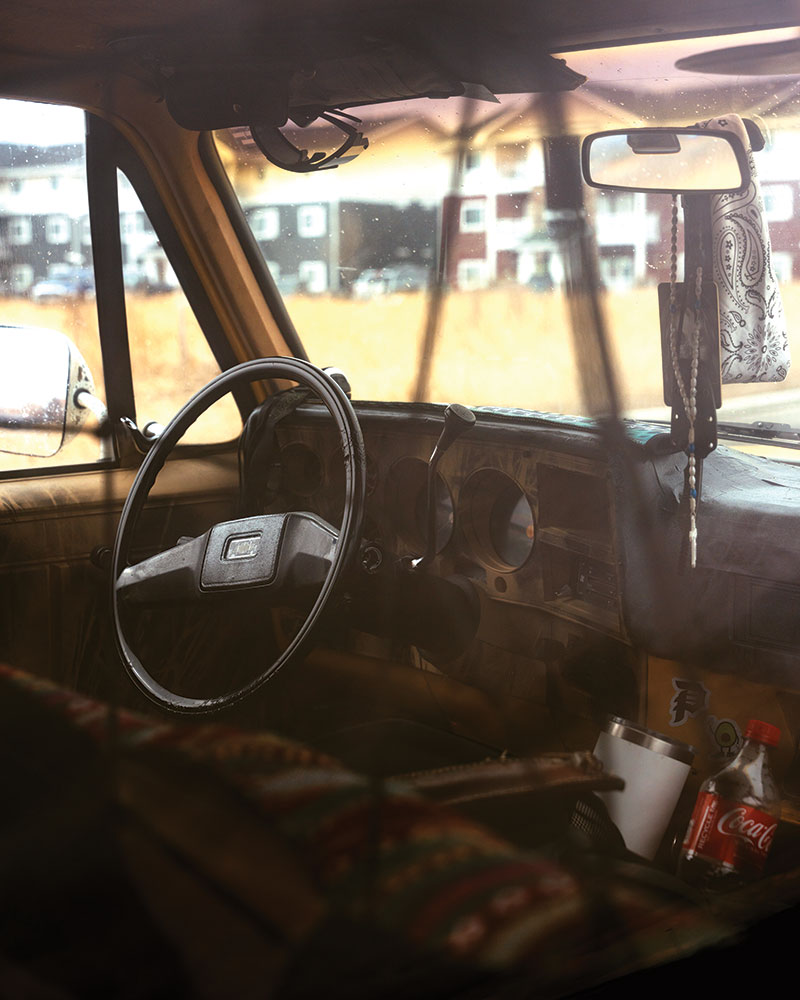
These contradictions are especially vivid in the construction industry, where the demand for new luxury homes brings immigrant workers to Bozeman and simultaneously prevents those workers from finding cheap housing for themselves. Tarlow, the retired construction lawyer, noted that the Bozeman-area construction sector skews politically conservative and anti-immigrant, even as it relies on the labor of undocumented immigrants.
“Among the bigger companies,” Tarlow said, “they would say things to me like, ‘Buzz, you know I want the biggest wall between us and Mexico, because I love Donald Trump. But, by the way, could you get me some guys?’”
Despite the difficulties, Manuel believes that Montana has been good for him and his kids. He misses his family in Honduras, especially his ailing mother, and driving without a license makes him nervous. But his job pays well, his daughter wants to attend college in the US, and many people are kind, he said. He’s made buddies beyond the local immigrant population, including one man he affectionately called his “American friend,” who brought medicine to his house when his son was sick. “He’s a very good friend,” Manuel said.
We were still talking when the restaurant we were in started to close. Employees began putting chairs on the tables and sweeping the floor. Manuel stood up and said that he couldn’t have stayed much longer anyway. “Tomorrow, I have to work.”
We cannot back down
We now confront a second Trump presidency.
There’s not a moment to lose. We must harness our fears, our grief, and yes, our anger, to resist the dangerous policies Donald Trump will unleash on our country. We rededicate ourselves to our role as journalists and writers of principle and conscience.
Today, we also steel ourselves for the fight ahead. It will demand a fearless spirit, an informed mind, wise analysis, and humane resistance. We face the enactment of Project 2025, a far-right supreme court, political authoritarianism, increasing inequality and record homelessness, a looming climate crisis, and conflicts abroad. The Nation will expose and propose, nurture investigative reporting, and stand together as a community to keep hope and possibility alive. The Nation’s work will continue—as it has in good and not-so-good times—to develop alternative ideas and visions, to deepen our mission of truth-telling and deep reporting, and to further solidarity in a nation divided.
Armed with a remarkable 160 years of bold, independent journalism, our mandate today remains the same as when abolitionists first founded The Nation—to uphold the principles of democracy and freedom, serve as a beacon through the darkest days of resistance, and to envision and struggle for a brighter future.
The day is dark, the forces arrayed are tenacious, but as the late Nation editorial board member Toni Morrison wrote “No! This is precisely the time when artists go to work. There is no time for despair, no place for self-pity, no need for silence, no room for fear. We speak, we write, we do language. That is how civilizations heal.”
I urge you to stand with The Nation and donate today.
Onwards,
Katrina vanden Heuvel
Editorial Director and Publisher, The Nation

